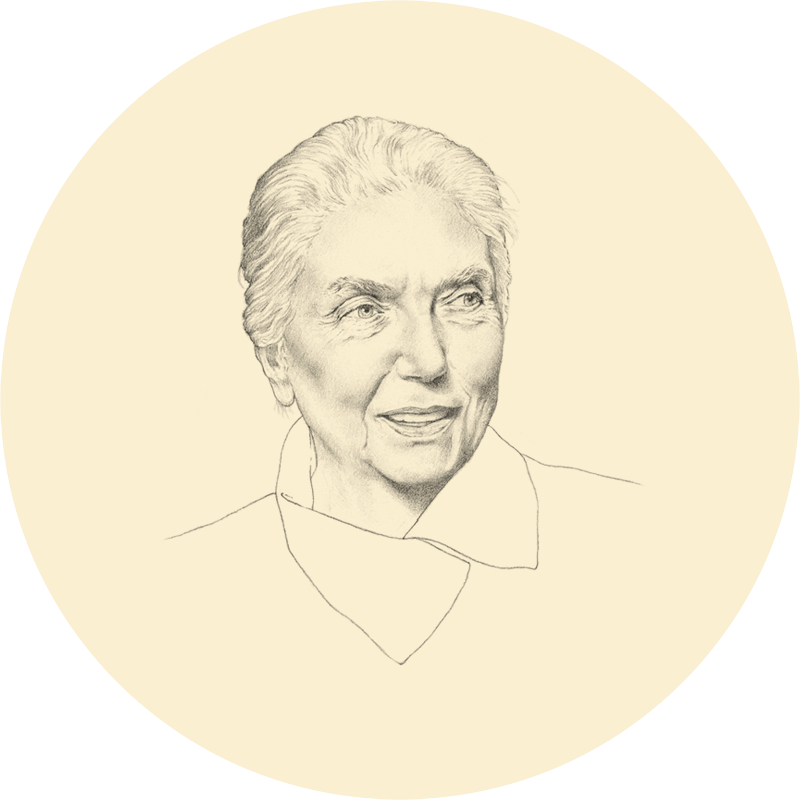Maria, or La penombra che abbiamo attraversato, were not neo-realist novels, but Proustian. For you, memory was creative freedom. Life, in the end, was unreachable, impossible to narrate. It was necessary to know how to choose, to select. To seek the universal in the particular, where everyone could see themselves. “For me, writing has always meant gathering some image from the dense, complex fabric of life, some note from the noise of the world, to then surround it with silence.” This was the meaning of the white spaces on the pages: like frames that enclosed the images of your narrations.
You always had a physical relationship with writing. A legacy of your past as a painter. You always wrote every first draft by hand: the pen was the brush, the page the canvas. The table in the living room was heaped with papers until the last day of your life. Dining at home implied constant movement and reordering of papers.
Cenzo’s patience was his way of loving you. Your home was never a place of official dinners, as might have been expected due to his managerial position. For working lunches, you preferred to meet publishers and colleagues at the Rigolo restaurant on Largo Treves. You would appear there with your particular, understated elegance. The only affectation was the hat. You had a remarkable collection of headwear. It might have seemed like an artist’s mannerism, though for you the hats were just practical objects, since you got headaches at the slightest puff of wind.
The Strega prize in 1969 for Le parole tra noi leggere (a line stolen from your friend Montale) brought joy and sadness. Piero wasn’t pleased to be the central focus of your story. Yet how many women, how many readers, came to see you, to ask for advice! You thought of yourself as a failed mother, you didn’t understand how you could help those unfamiliar friends. But you never refused a meeting, an appointment, on equal ground.
You felt lonely, after Cenzo passed, with Piero far away, in your “burrow” on Via Brera. In those years you met Antonio Ria. A meeting of solitudes. Can we say it was a new life, Lalla? The third one. The last. His devotion and his curiosity have allowed us to rediscover your past. He was the one who found all your paintings, piled under the bed or shut away in dusty steamer trunks. You were reborn, again, as a painter. The walls of your home displayed the paintings of your youth. The students at the art academy, right across the street, began to pay you visits. Sometimes just stopping for a cigarette by the gate of your house, near that little garden you loved so much for its blossoming cherry trees, which the city of Milan named for you after your death.
You lived a lot, Lalla. You knew it. You were grateful for Antonio’s attentions, but you suffered for your eyesight, which was gradually fading. To live without being able to draw or to write was like death for you. Antonio gave you enormous white sheets of paper, on which to note down, by hand, in the absolute whiteness of your blindness, your last thoughts. You were not worried about being forgotten; you were more concerned that your works should go on living, after you. Today your work table, the one you designed in your first life, together with your library, your papers and your paintings, adorn a room at the Biblioteca Nazionale Braidense. The “Lalla Romano” room. Savoyard Milanese. Painter of silences.
ASSOCIAZIONE AMICI DI LALLA ROMANO
Lalla Romano
Writer | Brera – Garibaldi | From the 1960s to the end of the millennium
Biography
Lalla Romano was born in 1906 at Demonte (Cuneo). After taking a degree in Letters at the University of Turin, she began to study painting with Felice Casorati. For twenty years she was both a painter and a writer, as well as a teacher. Encouraged by Montale, she made her debut in 1941 with the poems of Fiore. In 1947 she moved to Milan, and stopped painting. In 1951, for Einaudi, she published Le metamorfosi, the first of many narrative works, including: Maria, La penombra che abbiamo attraversato, Le parole tra noi leggere (Premio Strega 1969), Una giovinezza inventata, Nei mari estremi… Though nearly blind, she continued to write until she died (in Milan, 2001).
Pag. 1 2 3 | PDF Version
